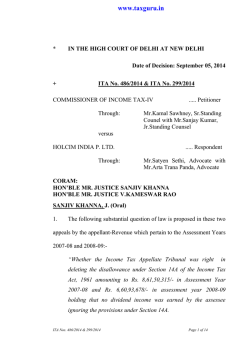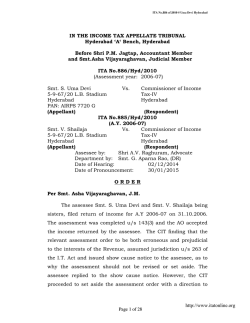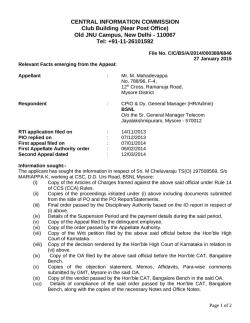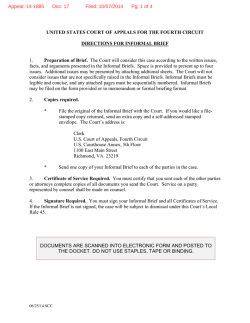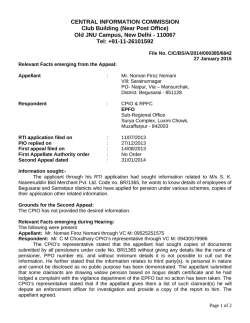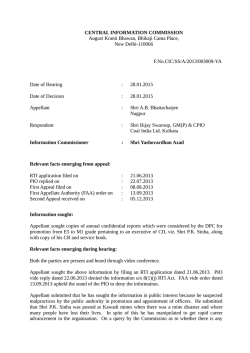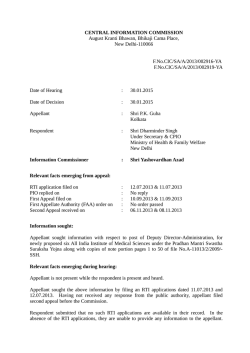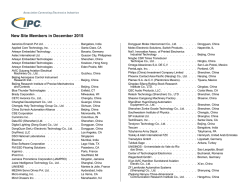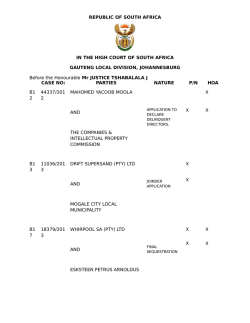
new delhi before shri j.sudhakar reddy, accountant member
IN THE INCOME TAX APPELLATE TRIBUNAL DELHI BENCHES : “C” NEW DELHI BEFORE SHRI J.SUDHAKAR REDDY, ACCOUNTANT MEMBER AND SHRI A.T. VARKEY , JUDICIAL MEMBER ITA Nos. 3159,3160/Del/2004 Asstt. Years 1996-97, 1997-98 M/s. GE Capital Transportation Financial Services Ltd., AIFACS Building, 1 Rafi Marg, New Delhi - 110 001. (PAN AAACS000IN) vs. JCIT, Special Range2, New Delhi. (Appellant) Appellant by Respondent (Respondent) : Shri Sanjeev Sabharwal, Sr. Advocate Shri Tushar Jaswal, Advocate, Shri Rahul Sateeja, Advocate : Ms. Swati Thupa, Advocate, Shri R.S. Gill, CIT (DR) ORDER PER J.SUDHAKAR REDDY, ACCOUNTANT MEMBER Both these appeals are filed by the assessee and are directed against separate order of the Commissioner of Income Tax (Appeal) XV, New Delhi dated 22.2.2004 for the asstt. year 1996-97 and dated 27.2.2004 for the asstt. year 1997-98. As both the appeals have common issues, for the sake of convenience, they are heard together and disposed off by way of this common order. The assessee is a company and is engaged in the business of leasing, hire purchase and finance. It filed its return of income, declaring a loss of Rs. 14,99,82,025/- on 30.11.96 for the asstt. year 1996-97. This return was processed u/s 143(I)(a), vide intimation dated 23.1.98, wherein the loss was determined at Rs. 14,85,81,522/-, by making prima- ITA. Nos. 3159,3160/Del/2004 facie disallowance of Rs. 13,30,503/-. Subsequently the assessee on 21.8.1997, filed a revised return of income, declaring loss of Rs. 15,89,59,000/- . This revised return was processed u/s 143(1)(a) wherein a similar prima facie disallowance of Rs. 13,30,503/- was made. 2. For the asstt. year 1997-98, the assessee filed its return of income on 21.8.1997, declaring a loss of Rs. 11,16,30,770/-. Thereafter the assessee filed a revised return of income, claiming credit of additional TDS and declaring the same loss as claimed in the original return of income. This return was processed u/s 143(IB). Later the assessee filed yet another revised return of income on 30th March, 1999, declaring a revised loss of Rs. 12,28,97,021/-. 3. For the asstt. year 1996-97 the AO determined the total income of the assessee at Rs. 4,66,16,331/- inter alia disallowing depreciation claimed etc. For the asstt. year 1997-98 the AO determined the total loss of Rs. 8,49,37,201/-, after making certain disallowance. Aggrieved the assessee carried the matter in appeal before the first appellate authority for both the assessment years. First appellate authority granted part relief. Further aggrieved the assessee filed this appeal before us. 4. We have heard the Ld. Senior advocate Shri Sanjeev Sabharwal on behalf of the assessee and Shri R.S. Gill Ld. CIT(DR) on behalf of the revenue. 5. Groundwise arguments were raised by both the parties. Paper books and case laws were filed alongwith with detailed charts. 2 ITA. Nos. 3159,3160/Del/2004 6. On a careful consideration of the rival contentions, perusal of the papers on record and the orders of the authorities below, as well as case law cited we hold as follows :7. We first take up the appeal for the asstt. year 1996-97 7.1 Ground No.1 is general in nature. 8. Ground No. 2 reads as follows :- “(i) On the facts and in the circumstances of the case and in law, the CIT(A) erred in disallowing additional loss of Rs. 89,76,975/- to be carried forward on account of revised return on the alleged ground that revised return was not filed within time allowed u/s 139(3) of the Income Tax Act. (ii) The learned CIT(A) failed to appreciate that the revised return was strictly as per provisions of Section 139 of the Income Tax Act.” 8.1 The facts are brought out at para 2.2 of CIT(A) order which is extracted for the ready reference : “2.2. The A.O. disallowed the loss of Rs. 89,76,975/- stating in his order that: Rs. 89,76,975/- over and above the loss of Rs. 14,99,12,075/- cannot be allowed to be carried forward because the same has been claimed by way of a return filed after due date prescribed u/s 139(1) and in view of the provision of section 80, no loss claimed by a return filed after date prescribed u/s 139(1) can be allowed to be carried forward. Here the argument that revised return filed u/s 139(5) gets merged with return filed u/s 139(1) does not survive because return filed u/s 139(5) still has a separate entity and all the provisions like processing u/s 143(1)(a), time limit of issue of notice u/s 143(2) etc. are separately applicable with regard to a revised return.” 8.2. First appellate authority at para 2.6 of this order held that revised return of income can be filed, only where the assessee discovers an omission or wrong statement in the return was due to a bonafide mistake or inadvertence by the assessee. After considering the submissions of the assessee he came to the 3 ITA. Nos. 3159,3160/Del/2004 conclusion that the revised return of income is not filed strictly in terms of Section 139(5). Thereafter at para 2.8 held as follows :- “2.8. The contention of Ld. AR that return filed u/s 139(5) is as good as return filed u/s 139(3) of the I.T. Act does not hold good. The law has undergone a change after the finance Act 1987 w.e.f. 1.4.1988, which requires the loss return to be filed within the time allowed under section 139(3) by way of a specific addition of reference to section 139(3) in section 80 for the requirement of the right to carry forward such loss, so that this decision can no longer be of any assistance to the tax payers to disregard their duty enjoined by law to file the return in time, if they want to avail of the benefit of loss to be carried forward. The AO is therefore right in disallowing loss to be carried forward hence this ground of appeal stands rejected.” 8.3. The contentions of the assessee are that as per section 139 (3), once a return of loss is filed within the time allowed u/s 139(5), all the provisions of the Act will apply as if , the return of loss is a return of income filed u/s 139(1) of the Act. Thus it was argued that section 139(5) of the Act will apply to the return of loss filed u/s 139 (3) of the Act. Neither 139(5) 139(3) nor section 139(1) nor section 80 excludes applicability of section 139(5) to the return filed u/s 139(3) of the Act. 8.4. On the observations of the Ld. CIT(A) that, a revised return can be filed by the assessee, only when there is an inadvertent mistake, the assessee submits that, there is no such requirement in law that any wrong statement or omission can be revised u/s 139(5). 8.5. Reliance was placed on the following judgments :1. Dharmpur Sugar Mills Ltd. vs. CIT 90 ITR 236 (All-HC) 2. CIT vs. Periyar District Co-operative Milk Producers Union Ltd. 266 ITR 705 (Mad-HC) 4 ITA. Nos. 3159,3160/Del/2004 3. Order dated 26.7.2004 passed by Hon’ble Supreme Court in SLP No. 13472/2004 – CIT v. Periyar District- Dismissing Department’s SLP 8.6. Ld. Departmental Representative submits that the revised return of income itself is not maintaining and under those circumstances the claim of the assessee is not sustainable. He relied on the order of the first appellate authority. 8.7. After considering the rival submissions we hold as follows :The Hon’ble Allahabad High Court in the case of Dhamapur Sugar Mills vs. CIT (supra) held that the income tax act contemplates, the filing by the assessee of a correct and complete return of income. The law gives him a right to substitute and bring on record a correct and complete return of income, if he discovers any omission or wrong statement in the return originally filed by him. The law cannot contemplate making of assessment, on the basis of a return, which even the assessee claims contains a wrong statement. When the assessee files a revised return , he admits that the original return filed by him was not correct or complete and substitutes the same by a revised return which according to him is correct and complete. The effective return for the purpose of assessment is thus the return which is ultimately filed by the assessee, on the basis of which he wants his income to be assessed. 8.8. The Ld. DR could not cite any contrary judgment on this issue. Under these circumstances we hold that the findings of the first appellate authority that the return filed u/s 139(5) of the Act is not as per the provisions of law, for the reason that the mistakes were not inadvertent is bad in law. We also observe that, the AO has processed the revised return u/s 143(I)(a). The revised return has not been 5 ITA. Nos. 3159,3160/Del/2004 rejected by him. Under these circumstances, it is not appropriate for the CIT(A) to hold otherwise. 8.9. The second issue is on the right of the assessee to carry forward of loss. The Ld. Counsel for the assessee relied upon the decision of Hon’ble Madras High Court in the case of CIT vs. Periyar District Co-operative Milk Producers Union Ltd. The Hon’ble Madras High Court has held as follows :- “A bare perusal of sub-sections (3) and (5) of section 139 of the Income-tax Act, 1961, more particularly the provision contained in section 139(3), makes it clear that a return of loss filed under section 139(3) may be filed within the time allowed under section 139(1). Once such a return is filed, all the provisions of the Income-tax Act shall apply as if such return has been filed under section 139(1). This position is clear from the expression”... all the provisions of this Act shall apply as if it were a return under sub-section (1).” In other words, a return filed under section 139(3) is deemed to be a return filed under section 139(1). The provision contained in section 139(3) makes it clear that all the provisions of this Act shall apply to such a return as if it were a return under section 139(1). In view of such a specific provision, there is no reason to exclude the applicability of section 139(5) to a return filed under section 139(3). In the face of the specific provision contained in section 139(3) laying down that all the provisions contained in the Act shall apply to a return under section 139(1), there was no further necessity in section 80 to refer to such provisions. On the other hand, there is no specific provision contained either in section 80 or in section 139 excluding the applicability of section 139(5) to a return filed under section 139 (3). Once a return of loss is filed under section 139(3), it takes the character of return filed under section 139(1) in respect of which the assessee can file a revised return claiming a higher amount of loss, under section 139(5).” 8.10. No contrary decision has been cited before us by the Ld. DR. Under these circumstances we respectfully follow the proposition of law laid down by the Hon’ble Madras High Court and allow the ground of the assessee by holding that the assessee can file a revised return claiming a higher amount of loss u/s 139(3) of the Act. In the result ground No. 2 is allowed. 6 ITA. Nos. 3159,3160/Del/2004 9. Ground No. 3 reads as follows :- “3. On the facts and in the circumstances of the case and in law, the CIT(A) erred in upholding the order of Assessing Officer (AO) thereby reducing notional interest expenditure from the dividend for calculation of deduction u/s 80M.” The facts are brought out at para 3.1 and 3.2 of the CIT(A) order which is extracted for ready reference :- 3.1 “During the year under consideration the appellant company received gross dividend income other than dividend income other than dividend income other than dividend on units of UTI amounting to Rs. 61.66,625/-. Thus, the deduction u/s 80M is computed as under :100% of dividend from shares Rs. 61,66,625/- Total amount eligible for deduction u/s 80M Rs. 61,66,625/- However, as the gross total income declared by the appellant was a negative figure, the appellant did not claim any deduction u/s 80M. 3.2 The AO observed that investments were made out of borrowings and therefore relying on the earlier year’s order he estimated notional interest and expenses relating to such investments amounting to Rs. 34,51,733/- and deducted the same from the dividend received to calculate the deduction u/s 80M on net income basis resulting in a disallowance of Rs. 34,51,733/-. The AO’s observations at para 6 of the assessment order are reproduced as under :“Assessee has not allocated any part of the financial/interest expenses towards dividend income and deduction u/s 80M has been claimed on gross dividend income. In fact, as gross total income is at negative figure, no deduction u/s 80M actually claimed by assessee, but according to him, deduction of Rs. 61,66,625/- u/s 80M equal to gross dividend income other than UTI dividend is available to him. In earlier years, Rs. 85,62,623/- out of interest paid was allocated towards investment of amount of Rs. 34,51,733/- shall be allocated towards investments of Rs. 5.5. crores in shares and thus net dividend income shall be Rs. 27,14,892/- (61,66,625/- 34,51,733/-). Therefore, deduction u/s 80M shall be available to maximum of Rs. 27,14,892/- depending upon gross total income.” 7 ITA. Nos. 3159,3160/Del/2004 9.1. The finding of the first appellate authority in para 3.3 which is extracted for ready reference :- 3.3 9.2. “The learned AR contended that the units of UTI were held by the appellant in compliance with the statutory liquidity requirements (SLR) prescribed under rule 12 of the NBFCs(RBI) Directions, 1997 and that the dividend warrants issued by UTI were payable at par all over India, hence no direct expenses were incurred in realising the dividend. The learned AR also contended that there is no scope for estimation of expenditure being made and no notional expenditure can be deducted for the purpose of earning the income.” The Ld. Counsel for the assessee contends that a) All expenses are to be allowed on actual basis and no disallowance can be made on presumptive or estimate basis , while computing deduction of dividend income u/s 80M of the Act. b) Investments have been made out of internal accruals. The Ld. CIT(A) for the asstt. Year 1990-91, 1991-92, 1992-93 and 1993-94, considered the cash flow statement, internal accruals and on facts had directed the AO to allow the claim of the assessee for deduction of dividend u/s 80M, without deducting any expenses on account of interest on borrowed funds. 9.3. Similar orders were passed by Commissioner of Income Tax for asstt. Year 1994-95 and 1995-96. This order of the first appellate authority was not challenged by the revenue. 9.4. Reliance was placed on the following judgements :1. CIT vs. United Collieries Ltd. (Calcutta High Court) 203 ITR 857 2. CIT vs. HDFC Bank Ltd. ITA No. 330 of 2012 (Bombay High Court) 9.5. Ld. DR opposed the contentions of the assessee and submitted that on facts the first appellate authority has come to the conclusion that the Ld. Authorised 8 ITA. Nos. 3159,3160/Del/2004 representative has not been able to prove that investments in units of UTI were made out of the internal accruals and not out of the borrowed funds. 9.6 After considering rival submissions we hold as follows : The assessee has provided a chart showing its surplus internal accruals. Its chart is at page 5 of the CIT (A) order which is extracted for ready reference :Particular 1 Internal Accruals Investments 2 3 Surplus internal accruals after deducting investment 4 A Balance as on May 31, 25,886,701 1987 450,758 25,435,943 B March 31, 1989 69,257,245 8,264,265 60,992,980 C March 31,1990 138,960,982 14,996,392 123,964,490 D March 31, 1991 219,437,407 35,758,971 183,678,436 E March 31, 1992 292,891,077 52,451,305 240,439,772 F March 31, 1993 396,491,000 83,937,000 312,439,772 G March 31, 1994 732,879,000 140,077,000 592,802,000 H March 31, 1995 1,006,904,000 500,475,000 506,429,000 I March 31, 1996 1,819,990,000 400,894,000 1,419,096,000 J March 31, 1997 1,949,358,000 475,984,000 1,473,374,000 A perusal of the chart demonstrates that the annual internal accruals are much higher than the investments made during that particular year. Under these circumstances the presumption is that the investments have been made from internal accruals and that no borrowed funds have been made for these investments. The Hon’ble Bombay High Court in the case of HDFC Bank Limited in 9 ITA. Nos. 3159,3160/Del/2004 Income Tax Appeal 330 of 2012 judgment dated 23rd July, 2014 followed its own judgment in the case of CIT vs. Reliance Utilities and Power Ltd. (2009) 313 ITR 340 (Bombay) and page 6 held as follows:- “In the present case undisputedly the assessee’s capital, profit reserves, surplus and current account deposits were higher than the investments in the tax free securities. In view of this factual position, as per the judgment of this court in the case of Reliance Utilities and Power Ltd. (supra) it would have to be presumed that the investments made by the assessee would be out of interest free funds available with the assessee”. Respectfully following the proposition laid down, we allow this ground of the assessee. 10. Ground No. 4 is regarding the disallowance of the claim of the assessee, for deduction of provisions for doubtful debts, amounting to Rs. 9,55,726/-. After considering rival submissions we find that the issue is covered against the assessee by the judgment of Hon’ble Supreme Court in the case of Southern Technologies Limited vs CIT 320 ITR 577 (SC). Respectfully following the same this ground of the assessee is dismissed. 11. Ground No. 5 is on the disallowance of adhoc interest of Rs. 20 lacs, out of total interest paid during the year, on account of interest free loans, given to companies. The facts have been recorded as follows by the Ld. CIT(A) :- “10.1 During the year under consideration the appellant gave advances aggregating to Rs. 199.38 lacs to its subsidiary company M/s. SRF Investcare Ltd. and Rs. 213 lacs to its subsidiary company M/s. SRF Asset Management Ltd. It was submitted by the appellant during the course of the assessment proceeding that these subsidiary companies were integrally related to the business of the appellant and the advances were given to these companies wholly and exclusively to promote the business interest of the appellant. 10 ITA. Nos. 3159,3160/Del/2004 10.2 The Assessing Officer did not agree with the contentions of the appellant. He held that no business interest of the appellant was involved since no income accrued to the appellant from such advances. Accordingly, he disallowed a sum of Rs. 20 lacs being the proportionate interest on borrowings on the ground that to this extent the loans taken have been diverted for nonbusiness purposes.” The first appellate authority upheld the order of the AO by observing that a) the assessee has not denied that the company has borrowed huge funds, on which huge interest has been paid. b) The business expediency in creating new entities in the shape of subsidiary companies and giving interest free loans, while paying huge interest to third parties has not been explained. c) It is not established whether loans are out of surplus funds or out of borrowed funds and the nexus is not established. At para 10.6 held as follows :- “10.6 I have considered the matter carefully. The jurisdictional High Court in CIT vs. Motor General Finance Ltd. (2002) 254 ITR 449 pointed out that section 114 of the Indian Evidence Act, 1870 left no option to the Tribunal except to decide against the assessee on its claim that interest free loans given to a subsidiary company out of proprietary funds and not borrowed funds in the facts of the case. When the AO asked the assessee to prove the same with reference to the bank accounts, they were not produced. It is in this context, it was found that the estimated interest disallowance should have been confirmed by the tribunal. Following the above decision of the Jurisdictional High Court, I hereby uphold the disallowance made by AO.” 12. After hearing rival contentions we find that the assessee has promoted and formed the subsidiary companies, to undertake stock-broking and asset management activities. The Ld. AR contended that the assessee is a financial service company and in order to promote its business further, it had to undertake the entire gamut of financial services, and hence this subsidiary companies are formed, as the existing regulations required separate companies to be set up for this purpose. At 11 ITA. Nos. 3159,3160/Del/2004 para 10.4 of the CIT order the submissions of the assessee that the net owned funds and internal accruals are far in excess of the investment in question is recorded. We extract the same for your ready reference. Investments Surplus internal accruals after deducting investments Balance as on 25,886,701 May 31, 1987 450,758 25,435,943 March 31, 1989 69,257,245 8,264,265 60,992,980 March 31, 1990 138,960,982 14,996,392 123,964,590 March 31, 1991 219,437,407 35,758,971 183,678,436 March 31, 1992 292,891,077 52,451,305 240,439,772 March 31, 1993 396,491,000 83,937,000 312,554,000 March 31, 1994 732,879,000 140,077,000 592,802,000 March 31, 1995 1,006,904,000 500,475,000 506,429,000 March 31, 1996 1,819,990,000 400,894,000 1,419,096,000 Total 4,702,697,412 1,237,304,691 3,465,392,721 Particular 13. Internal Accruals A perusal of the same demonstrates that the propositions based on which we had decided ground No. 3 of the assessee are applicable to the facts of the ground also. The assessee has led evidence to prove his case and hence the decision of the Jurisdictional High Court in the case of Motor General Finance Ltd. (supra) is not applicable as the facts are different. Thus respectfully following the preposition laid down in the judgment of Hon’ble Bombay High Court in the case of CIT vs. Reliance Utilities and Power Ltd.(supra) and the propositions laid down by the 12 ITA. Nos. 3159,3160/Del/2004 Jurisdictional High Court in the case of CIT vs. Bharti Televenture Ltd. 331 ITR 502 (Delhi High Court) we allow this ground of the assessee. 14. Ground No, 6 is against the disallowance of a claim of interest and old expenses of Rs. 88,11,147/-, which are claimed as incurred during the year, but had been disclosed as deferred revenue expenditure in the books of the assessee. The facts are brought out at para 12.1 and 12.2 of the Ld. CIT(A) order which is extracted for ready reference :- “12.1 During the year under consideration, the appellant has claimed an amount of Rs. 88,11,147/- for interest, commitment charges, service charges and other expenses incurred for obtaining secured loan from IFC Washington and FMO Netherlands, which was deferred in the books of account and was not debited to the Profit and Loss account of assessment year 1996-97. However, as the same has been incurred and actually paid during the current assessment year, the appellant claimed the same as an allowable deduction in the return of income. 12.2 The AO rejected the claim of the appellant and disallowed the aforesaid expenses on the ground that the same is deferred in the books of account and has not been debited in the Profit and Loss account of the assessment year 1996-97.” 15. After hearing rival contentions we agree with the contentions of the Ld. Counsel for the assessee that there is no concept of deferred revenue expenditure under the Income Tax Act. In the case of CIT vs SBI Cards & Payment Services Pvt. Ltd. in ITA Nos. 603 and 604 of 2014 judgment dated 29.9.2014 the Hon’ble Delhi High Court held as follows:- “13. The Delhi High Court has repeatedly held that advertisement expenditures in the present day context should normally be treated as revenue expenditure, unless there are special circumstances and reasons to hold that the expenditure was capital in nature. The reason is that the advertisements do not have a lasting and long term effect and the memory of the customers or targeted audience is short lived. The advertisements fade away and do not have an enduring impact. If there is a lack of advertisement by one, the vacuum and space is taken over by others with benefit and advantage to the detriment of the 13 ITA. Nos. 3159,3160/Del/2004 first. Reference can be made to CIT vs. Salora International Ltd. (2009) 308 ITR 199 (Delhi) and the subsequent decision in ITA No. 597/2014 titled CIT vs. M/s. Spice Distribution Ltd. decided on 19th September, 2014. 14. This brings us to ITA No. 604/2014. Addition of Rs. 17,93,59,566/- was made by the Commissioner of Income Tax (Appeals) after issuing notice of enhancement. The Assessing Officer had not made the said addition. The Commissioner of Income Tax (Appeals) held that the expenditure under the head, “Card Acquisition Expenses” had been amortised or divided into two years in the books of accounts and accounts prepared under the Companies Act, 1956. But, in the Profits & Loss account etc. prepared for the purpose of income tax, the entire amount was treated as revenue expenditure in one assessment year. The Commissioner of Income Tax (Appeals) held that the assessee being a company was bound to prepare profit and loss accounts and the balance sheet which would give true and fair account of its financial affairs. Reference was made to the provisions of the Companies Act and the Accounting Standard 5, issued by the Institute of Chartered Accountants of India (ICAI), to the effect that the same accounting policy should be normally adopted for similar events and transactions in each period. With reference to Section 145 of the Act, it was observed that CBDT has notified accounting standards vide SO 69(E) dated 25th January, 1996, which mandated an assessee to follow accounting policy which represents the true and fair view of the state of affairs of business, profession etc. Relying upon the decision of the Supreme Court in Madras Industrial Investment Corp. Ltd. vs. CIT (1997) 225 ITR 802 (SC), the Commissioner of Income Tax (Appeals) held that the expenditure in question should be treated as deferred revenue expenditure and Rs. 1,70,79,469/- should be allowed in the current assessment year and the balance amount of Rs. 17,93,59,566/- should be allowed as expenditure in the next assessment year, i.e. 2007-08. 15. The aforesaid addition has been deleted by the Tribunal and we are in agreement with their findings. Before, we elucidate, it will be relevant and important to reproduce the reply of the assessee, which for the sake of convenience is reproduced below : “Till 31st March,2005 sales force compensation, card acquisition cost (sales service provider expenses, incentives related to card acquisition, credit investigation cost, application printing cost), consumption of plastic cards, and delivery charges were recognized on an upfront basis. During current year (with effect from 1 April, 2005), the Company has changed its policy to recognize productive sales force compensation, card acquisition cost, consumption of plastic cards and delivery charges over a period of one year as this more closely reflects the period of which the fee relates to. As a result of this change in accounting policy, profit before tax for the current year is higher by Rs. 19,64,39,035/-. 9.2 This accounting treatment is being explained by the under-noted illustration. 14 ITA. Nos. 3159,3160/Del/2004 “ If card-marking expenses of Rs. 1000/- has been incurred in the month of July 2005, then as per the above accounting policy, the amount to be charged to the Profit & Loss Account for the Financial Year 2005-06 would be computed as under : =Rs. 1000*9/12 = Rs. 750 The balance amount to be deferred & claimed in the next Financial Year i.e. 2006-07 would be calculated as under : =Rs. 1000*3/12 =s. 250” 16. It is clear from the aforesaid reply and is an accepted position that till the assessment year in question, sales force composition, card acquisition costs etc. were recognised on upfront basis i.e. in the year in which they were incurred. In the current assessment year in question, i.e. 2006-07, the assessee consequent to change in policy had spread over or divided the expenditure over a period of one year in the books of accounts from the date they were incurred. It is meant that the expenditure could partly fall in the current year and partly in the next year. The change would have imperatively impacted the first assessment year. Albeit, from the second year, it would not make much difference, though the figures for each year would be different. The aforesaid change or modification was restricted to the entries in the books of account and was as per the mandate of the Companies Act, 1956. However, in the Income Tax Return and tax accounts, the earlier method or treatment was continued. Section 145 postulates that accounts should give true and fair picture of the financial position or the income of the assessee. It is further noticeable that the Act i.e. the Income Tax Act, 1961 only refers to capital or revenue expenditure. There is no provision in the Act which postulates or refers to deferred revenue expenditure. Deferred revenue expenditure is, therefore, not as such recognised in the Act. The Act to this extent is at variance and does not accept deferred revenue expenditure as a plausible and acceptable method. Accounting principles or standards have to be applied and adopted and they must disclose fair and true financial position and the income, but they cannot be contrary to the provisions or the mandate of the Act. The Act would then override the accountancy principles. There are several provisions in the Act like Section 43B which provide for different treatment than required under the provisions of the Companies Act or the accounting principles or standards. Reference can be made to Kedarnath Jute Mfg. Co. Ltd. versus CIT, (1971) 82 ITR 363 where it was held, “..., We are wholly unable to appreciate the suggestion that if an assessee under some misapprehension or mistake fails to make an entry in the books of account and although under the law, a deduction must be allowed by the Income Tax Officer, the assessee will lose the right of claiming or will be debarred from being allowed that deduction. Whether the assessee is entitled to a particular deduction or not will depend on the provision of law relating thereto and not on the view which the assessee might take of his rights nor can the existence or absence of entries in the books of account be decisive or conclusive in the matter....” 15 ITA. Nos. 3159,3160/Del/2004 In Tuticorin Alkali Chemicals & Fertilizers Ltd. v. CIT (1997) 227 ITR 172 at page 184, it was observed, “”It is true that this Court has very often referred to accounting practice for ascertainment of profit made by a company or value of the assets of a company. But when the question is whether a receipt of money is taxable or not or whether certain deductions from that receipts are permissible in law or not, the question has to be decided according to the principles of law and not in accordance with accountancy practice. Accounting practice cannot override Section 56 or any other provision of the Act. As was pointed out by Lord Russel in the case of B.S.C. Footwear Ltd. (1970) 77 ITR 857, 860), the Income Tax law does not march step by step in the footprints of the accountancy profession.” It was held by the Bombay High Court in Commissioner of Income Tax versus Bhor Industries Limited (2003) 264 ITR 180, “...If (sic, It) is well settled that, ordinarily, revenue expenditure, which is incurred wholly and exclusively for the purposes of business, must be allowed in its entirety in the year in which it is incurred and it cannot be spread over a number of years even though the assessee has written it off in its books over a period of years. It is only in cases of special type of assets that the spread over is warranted....” Judgement of the Supreme Court in Madras Industrial Investment Corp. (supra) was considered and distinguished in CIT vs. Panacea Biotech Ltd. , ITA No. 22 & 24/2012 and CIT vs. Citi Financial Consumer Fin Ltd. (2011) 335 ITR 29 (Del.), holding that the asseseee’s claim to spread over the expenditure over a period of time is tenable provided it is justified as in the case of issue of bonds at a discount. However, the same principle would not apply if the assessee treats the same as revenue expenditure and in fact per Section 37(1) of the Act, the expenditure is revenue in nature and has been incurred or has accrued. This right to claim deferred revenue expenditure is given to the assessee and not to the revenue. In the facts of the present case, as already noticed, the expenditure as per the Commissioner of Income Tax (Appeals) should be partly spread over two years, instead of the year in which it was incurred. But it is accepted and admitted that the expenditure in question was revenue in nature. It had accrued and was paid. Nothing and no acts had to be performed and undertaken in future. It is not shown how and why, if the said expenditure was allowed in the current year, it would not reflect true and correct financial position or income of the assessee in the current assessment year. We, therefore, do not see any reason to interfere with the order of the Tribunal and issue notice in ITA No. 604/2014. “ 16 ITA. Nos. 3159,3160/Del/2004 16. As the expenditure in question is undisputedly in the revenue field we apply the principles laid down by the Jurisdictional High Court and allow the claim of the assessee. Thus ground of the assessee is allowed. 17. Ground No. 7 is on the restriction of claim of depreciation in respect of commercial vehicles given on lease, on the ground that the assessee is not engaged in the business running trucks on hire. The first appellate authority has rejected the claim of the assessee that the assessee has leased the commercial vehicles to various transport operators, who inturn used these vehicles in the business of running them on hire. Admittedly this issue is covered in favour of the assessee by the decision of Tribunal in the assessee’s own case for the asstt. year 1994-95 and for the asstt. year 1998-99, which is reported in 113ITD 22 (Delhi). The prepositions laid down by the Tribunal in these decisions, are in consonance with, the propositions laid by the Jurisdictional High Court in the case of CIT vs. MGF (India) Ltd. 285 ITR 142 (Delhi) and the judgment of the Hon’ble Supreme Court in the case of M/s. ICDS vs. CIT reported in (2013) 350 ITR 527 (SC). 18. Hence, consistent with the view taken by us for the asstt. year 1994-95 and 1998-99 we allow this ground of the assessee. 19. Ground No. 8 is on disallowance of depreciation amounting to Rs. 8,65,25,609/on assets which are purchased and leased back. The Ld. CIT(A) has brought out the facts at para 14.1 to 14.3 of his order. The same is reproduced hereunder :- “14.1 The above grounds deal with the disallowance of depreciation amounting to Rs. 4,00,00,000/- on certain assets purchased from and leased back to M/s. PSEB and RS. 3,90,31,359/- (net of Principal recovery) on assets purchased and leased back to some other parties. 17 ITA. Nos. 3159,3160/Del/2004 14.2 The AO disallowed the claim of depreciation on the assets leased to M/s. Oswal Sugar Ltd. and M/s. PSEB in view of the following :(1) Same assets were purchased from M/s. PSEB and M/s. Oswal Sugar Ltd. and leased back to them respectively. (2) The assets involved are old and these parties had claimed 100% depreciation on these assets and therefore the WDV of the assets in the books of the parties at the time of sale to the appellant was Nil. (3) No physical delivery of plant and machinery took place and only title for leased assets were transferred and mere raising of invoice by these parties for sale of the assets cannot really amount to sale of those assets. (4) The assets were part and parcel of their manufacturing units and if those were removed, the units with which they were attached could not be run. 15.3 In the case of transactions with the parties other than PSEB and Oswal Sugar Ltd. the AO questioned the business expediency on the part of the appellant to first purchase those assets and to give them back on lease to the same party. The AO denied depreciation on those transactions alleging it to be a device adopted by the parties for avoidance of the legitimate tax due. 14.3 The Ld. AR submitted the details of depreciation claimed on these assets and their present status, which are as follows :- Depreciation claimed Depreciation Status after minus principal the expiry of recovery lease tenure Oswal Sugar 25,000,000 Ltd. New Delhi. 25,000,000 22,113,862 Retained by GE Punjab State 40,000,000 Electricity Board 40,000,000 37,277,915 ------ Filatex India 10,000,000 Ltd. New Delhi 10,000,000 8,952,936 ------- Datar Switchgear Ltd. Nasik 7,494,250 6,294,250 Retained GE Pioneer Alloy 2,500,000 Casting Ltd. Tamil Nadu 2,500,000 2,256,449 Retained GE High Temp 3,062,717 Furnace Ltd. 1,531,359 1,235,495 Retained GE Party Name Net of assets 14,988,500 18 ITA. Nos. 3159,3160/Del/2004 Bangalore 20. After hearing rival contentions, we find that the genuineness of the purchase and lease back transactions have been upheld by the ITAT the assessee’s own case for the asstt. year 1994-95 and 1995-96. The decision of the Tribunal, admittedly, has been accepted by the revenue and no further appeal has been filed. 21. Out of the six sale and lease back transaction, except in the case of PSEB and Oswal Sugars Ltd., the AO disallowed the depreciation by questioning the commercial expediency of the transaction. This ground of disallowances is not legally correct. When the genuineness of the transaction is not doubted, disallowance of depreciation is not warranted. The AO does not have the jurisdiction to question commercial expediencies and that too is in a transaction between unrelated parties. As regards transaction of the PSEB and Oswal Sugar Ltd. the submissions of the assessee counsel are extracted at para 14.4 of the CIT(A) order:- “14.4 With regard to the transaction with PSEB and Oswal Sugar Ltd., the AR submitted as follows :The transaction in question is admittedly a sale and lease back transaction where the lessee was already owning the assets which it sold to the appellant and obtained back on lease. The sale took place exclusively for the purpose of leaseback. The two transactions i.e. sale and lease back are distinct transactions and therefore cannot be treated as one transaction. The Appellant had first entered into an agreement to purchase the assets from various parties. The AO has failed to take cognizance of the fact that both the transactions are separate and independent and therefore cannot be regarded as one transaction i.e Finance transaction. The fact of no physical delivery having been made is of no significance since the leased goods were already with the lessee prior to the lease and it was a case of constructive delivery. 19 ITA. Nos. 3159,3160/Del/2004 Even as on the date of the transaction, the various items of the equipment had unexpired useful life of approximately 10 years as per the valuation report in the case of agreement with PSEB. The lease agreement did not have any stipulation for purchase of the assets after the expiry of lease tenure at any pre-determined price. Merely because the WDV in the hands of the seller may have been nominal or even nil, the appellant cannot be denied the right to claim depreciation on the assets since the main purpose of the transfer of the asset was not the reduction of a liability to income tax by claiming depreciation with reference to an enhanced cost in the hands of the purchaser. In this case there was no reduction of income tax liability in the hands of the purchaser.” 22. The first appellate authority approved the finding of the AO that the transaction in question is a finance transaction but has been given the colour of lease transaction. On these facts we examine the legal position. 23. The assessee had filed a valuation report in support of his claim for deduction. The AO without considering the same, rejected the claim of the assessee. Such an act is against the prepositions laid down by the Hon’ble Gujarat High Court in the case of Ashwin Vanaspati Industries vs. CIT (2002) 255 ITR 26 (Guj). The Jurisdictional High Court in the case of CIT vs. Cosmos Films Ltd. 338 ITR 226 (Delhi) at para 20 to 22 held as follows:- “20. We also note that in Industrial Development Corporation of Orissa Ltd. (2004) 268 ITR 130 (Orissa), the Orissa High Court was dealing with a case which was similar to the one before us where, in place of the Haryana State Electricity Board, it was the Orissa State Electricity Board (OSEB). The said High Court observed that if the sale and lease back agreement between the assessee and the OSEB indicate that the assessee had purchased the plant and machinery from the OSEB for a price and had leased out the same to the OSEB on lease rent, the Revenue Department cannot discard the said sale and lease back agreement on the ground that the underlying motive of the assessee to enter into the said transaction was to reduce its income-tax liability. The Orissa High Court observed that the Revenue could, however, discard the said transaction only if there were materials or evidence before it to show that the intention of the parties were different from what had been incorporated in the sale and lease back agreements and that the transaction was really a sham and dubious transaction and was a colourable device. We are in complete agreement with 20 ITA. Nos. 3159,3160/Del/2004 these observations of the Orissa High Court in the case of Industrial Development Corporation of Orissa Ltd. (2004) 268 ITR 130 (Orissa). We are also in agreement with the conclusion of the said High Court that in such cases, the court would have to find out as to what was the real intention of the parties in entering into the sale and lease agreement and that such intention has to be gathered from the words in the said agreement in a tangible and in an objective manner and not upon a hypothetical assessment of the supposed motive of the assessee to avoid tax. We have already indicated that the intention gathered from the documents on record shows that the ownership and title of the said equipment had been transferred to the respondent-assessee and that after the said transfer, the lease was entered into and the said equipment was leased back to the HSEB. It has not at all been established on the basis of evidence on record that the transaction was a colourable device entered into by and between the HSEB and the respondent-assessee. 21. We also note that a similar view has been taken by the Rajasthan High Court in the case of CIT vs. Rajasthan State Electricity Board (2006) 204 CTR (Raj.) 415 and the Gujarat High Court in the case of CIT vs. Gujarat Gas Co. Ltd. (2009) 308 ITR 243 (Guj) which followed the decision of the Rajasthan High Court in the case of CIT vs. Rajasthan State Electricity Board (2006) 204 CTR (Raj) 415. 22. We find that the observations of the Supreme Court in the case of Asea Brown Boveri Ltd. (2004) 126 Comp Cas 332 (SC) ; AIR 2005 SC 17, with regard to the nature of a financial lease are not of much use to the case of the Revenue in view of the factual backdrop that, on facts, the transaction in question has been found to be genuine. Once it is established that the ownership of the said equipment is that of the assessee, then it is clear that the respondent-assessee would be entitled to claim depreciation as allowed by the Commissioner of Income-tax (Appeals) and the Income-tax Appellate Tribunal. “ 24. In our view the facts in the case on hand is covered by the proposition laid down in this decision of Jurisdictional High Court. Respectfully following the same we uphold the contentions of the assessee and allow this ground. 25. Ground No. 9 is against the disallowance of the claim of the assessee with regard to exclusion from income of principal amount recovered amounting to Rs. 2,55,39,269/- on lease transactions which were earlier considered as finance transactions by the AO. In the earlier asstt. years, the assessee had offered to tax, the lease rental received, including the principal portion, by treating the transactions in question as lease transactions. Lease transactions were considered as finance 21 ITA. Nos. 3159,3160/Del/2004 transactions by the AO and the depreciation claimed was disallowed. Consequently the principal portion of the lease transactions, which were offered to tax had to be reversed. The assessee’s claim is that such consequential benefit has to be allowed. The Ld. Counsel submitted that, he is not pressing this ground of appeal. In view of our decision in ground No. 8 where we accepted this claim of the assessee that these transactions are lease transactions. In the result this ground is dismissed. 26. Ground No. 10 is against the finding of the first appellate authority that certain disallowance made by the AO and challenged by the assessee before the first appellate authority, are not arising from the asstt. order. These issues are a) exclusion of principal recovery amounting to Rs. 1,55,70,780/- from the lease rentals in respect of transactions offered as finance transactions under the Voluntary Disclosure of Income Scheme (VDIS 1997) 2) b) exclusion of net income amounting to Rs. 1,22,77,685/-, which had been offered to tax under the VDIS 1997.c) claim of long term capital loss amounting to Rs. 7,66,867/- d) claim of deduction of Rs. 77,45,779/- in respect of income of non-performing assets, which is not recognised as income in the books of accounts, by following the prudential norms of RBI. 27. The Ld. CIT(A) had at para 18.3, 19.4 and 20.7 held that the issue have not been discussed by the AO and do not emanate from in the asstt. order for the year under consideration. He dismissed the same. The Ld. Counsel for the assessee prayed that these are legal grounds raised by the assessee and that the facts are recorded that the Ld. CIT(A) should have adjudicated these claims on merit. Relied on the following decisions a) CIT vs. V. Nirbheram Daluram 139 CTR 484 (SC) 2) Jute Corporation of India 187 ITR 688 (SC). The Ld. DR opposed these contentions. 22 ITA. Nos. 3159,3160/Del/2004 28. The Hon’ble Supreme Court in the case of Jute Corporation of India Ltd. (supra) has held as follows : “The appellant, a Government corporation engaged in the jute industry, had not claimed any deduction of purchase tax liability in its return for the assessment year 1974-75 in the belief that it was not liable to purchase tax under the Bengal Raw Jute Taxation Act, 1941. Later on, the appellant was assessed to the purchase tax, but it disputed the liability and preferred an appeal and obtained a stay order. In an appeal before the Appellate Assistant Commissioner, the appellant raised an additional ground for deduction of the purchase tax on the ground that the tax liability should be deducted in computing its profits, in view of the decision of the Supreme Court in Kedarnath Jute Mfg. Co. Ltd. vs. CIT (1971) 82 ITR 363. The Appellate Assistant Commissioner permitted the appellant to raise the additional ground and, after hearing the Income-tax Officer, allowed the claim. On appeal, the Appellate Tribunal, placing reliance on the decision of the Supreme Court in the case of Gurjargravures P. Ltd. (1978) 111 ITR 1, held that the Appellate Assistant Commissioner had no jurisdiction to entertain the additional claim. Both the Tribunal and the High Court rejected the respective applications of the appellant for reference. On appeal to the Supreme Court.” 29. Respectfully following these decisions we uphold the contentions of the assessee that the Ld. CIT(A) should have considered the claim of the assessee on merits. Hence we set aside the order to the file of the first appellate authority for fresh adjudication, on merits, in accordance with law. In the result, ground No.10 is allowed for statistical purpose. Hence the appeal of the assesee is allowed in part. ITA No. 3160/D/2004 Asstt. year 1997-98 30. Ground No. 1 is general in nature. 31. Ground No. 2 is against the adhoc disallowance of Rs. 30 lacs out of total interest paid during the year, on the ground that interest free loans were given to the subsidiary of the assessee company. A similar issue on identical facts was 23 ITA. Nos. 3159,3160/Del/2004 considered by us while disposing off ground No. 5 in ITA No. 3159/D/09 for the asstt. year 2006-07. Consistent with the view taken therein and for the same reasons we allow this ground of the assessee. 32. Ground No. 3 is against the restriction of claim of depreciation on commercial vehicles given on lease to 25%, as against 40% claimed by the assessee. Here also the first appellate authority followed his conclusions for the asstt. year 1996-97. Consistent with the view taken by us, while disposing off ground No. 7 for the asstt. Year 2006-07. On the very same issue we allow this ground of the assessee. 33. Ground No. 4 is challenging the disallowance of claim of depreciation on equipment which has been purchased and leased back to the same parties i.e M/s. Datar Switchgear Ltd. and High Temp Furnance Ltd. Similar issue has been adjudicated by us while disposing off ground No.8 for the asstt. Year 1996-97. Consistent with the view taken therein, we allow this ground of the assessee. 34. Ground No. 5 challenges the decision of the Ld. CIT(A) in not adjudicating the grounds of the assessee on merits for the reason that these issues did not emanate from the order of the AO. The issues in question are (a) disallowance of Rs. 1,27,04,732/- and Rs. 71,475/- being interest on interest tax u/s 12A and 12B of the Interest Tax Act of 1974 (b) carry forward of assessed unabsorbed depreciation and long term capital loss (c) amending the opening written down value which arose as result of disallowance of depreciation in earlier years. Similar issue was adjudicated by us, while disposing off ground No. 10 for asstt. year 1996-97 in ITA No. 3159/D/2004. Consistent with the view taken therein, we set aside the issue with the file of the CIT(A) for fresh adjudication on merits in accordance with law. 24 ITA. Nos. 3159,3160/Del/2004 35. In the result both the appeals of the assessee are allowed in part. Order pronounced in the Open Court on sd/(A.T. VARKEY) JUDICIAL MEMBER Dated: 30th January, 2015 ‘veena’ Copy of the Order forwarded to: 1. Appellant 2. Respondent 5. DR 6. Guard File 30th January, 2015. sd/(J.SUDHAKAR REDDY) ACCOUNTANT MEMBER 3. CIT 4. CIT(A) By Order Deputy Registrar 25
© Copyright 2026
